Photos from recent landscaping projects by Ecoyards in West Seattle
June 14, 2011 @ 3:35 pm
Filed under Seattle Hardscaping, Seattle Landscape Design, Seattle Landscape Maintenance, Vegetable Gardening Permalink · No Comments »
Filed under Seattle Hardscaping, Seattle Landscape Design, Seattle Landscape Maintenance, Vegetable Gardening Permalink · No Comments »
This is the weekend to end all weekend plant sales. There are two incredible plants sales in Seattle: the King County Master Gardener plant sale at the University of Washington and the Seattle Titlh edible plant sale in Wallingford.
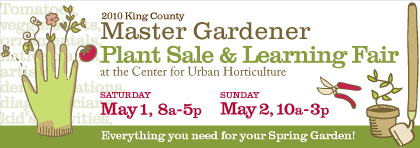 We’ve volunteered at the Master Gardener plant sale in previous years, but will be out of town this weekend. The sale runs from 8 a.m. to 5 p.m., Saturday, May 1 and 10 a.m. to 3 p.m. Sunday, May 2. You’ll find a wide selection of perennials, ornamentals, shrubs, trees, vines and edibles, including famous tomato starts, from Master Gardeners and local growers.
We’ve volunteered at the Master Gardener plant sale in previous years, but will be out of town this weekend. The sale runs from 8 a.m. to 5 p.m., Saturday, May 1 and 10 a.m. to 3 p.m. Sunday, May 2. You’ll find a wide selection of perennials, ornamentals, shrubs, trees, vines and edibles, including famous tomato starts, from Master Gardeners and local growers.
 The second plant sale is one that vegetable gardeners can’t miss. Seattle Tilth’s annual plant sale is one of the best in town. You can choose from over 50 varieties of tomatoes and 20 different kinds of peppers. I always leave this sale with a handful of edibles, including rare pumpkin, eggplant, cucumber and other starts that you just can’t find anywhere else.
The second plant sale is one that vegetable gardeners can’t miss. Seattle Tilth’s annual plant sale is one of the best in town. You can choose from over 50 varieties of tomatoes and 20 different kinds of peppers. I always leave this sale with a handful of edibles, including rare pumpkin, eggplant, cucumber and other starts that you just can’t find anywhere else.
Filed under Garden Calendar, Vegetable Gardening Permalink · No Comments »
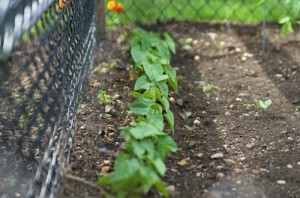 As you’re getting ready to plant your garden this summer, consider planting an extra row of lettuce, snap peas, broccoli, spinach or other vegetables for hungry families. The White Center Food Bank welcomes all donations of fruits and vegetables.
As you’re getting ready to plant your garden this summer, consider planting an extra row of lettuce, snap peas, broccoli, spinach or other vegetables for hungry families. The White Center Food Bank welcomes all donations of fruits and vegetables.
The food bank’s Donna Pierce says that produce can be extremely expensive for families trying to get by on very little. She says there’s no such thing as too much produce at the food bank.
The White Center Food Bank accepts food donations Monday through Friday from 8:30 a.m. to 5 p.m.. But it’s best to bring fresh produce in either the afternoon before or the morning of distribution days (Mondays, Wednesdays, Thursdays, Fridays, and the third Saturday of each month.
The West Seattle Food Bank also takes donations of fresh produce. You can donate from 9 a.m. to 3 p.m. Monday through Friday; until 7 p.m. on Wednesdays; and by appointment.
Filed under Seattle Landscape Maintenance, Vegetable Gardening Permalink · No Comments »
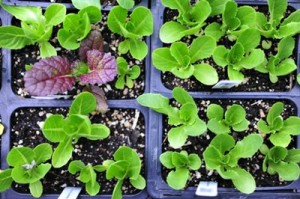 For years, gardeners had to wait until late spring to get their hands on some of the most prized vegetables starts in Seattle. Now eager gardeners can get a jumpstart on an amazing selection of vegetable starts, perennials and herbs at Seattle Tilth’s Early Spring Edible Plant Sale on March 20. The sale features plants that are proven performers in the Northwest, including ‘green globe’ artichoke, pac choi, fennel, lettuce, beets, cabbage, cauliflower, chard, and eight kinds of broccoli such as the very funky-looking Romanesco (pictured below). I’ve had great success with many of the vegetable plants I’ve bought from Tilth, and count on the wide selection of Tilth tomatoes, melons and other veggies to add variety to my garden.
For years, gardeners had to wait until late spring to get their hands on some of the most prized vegetables starts in Seattle. Now eager gardeners can get a jumpstart on an amazing selection of vegetable starts, perennials and herbs at Seattle Tilth’s Early Spring Edible Plant Sale on March 20. The sale features plants that are proven performers in the Northwest, including ‘green globe’ artichoke, pac choi, fennel, lettuce, beets, cabbage, cauliflower, chard, and eight kinds of broccoli such as the very funky-looking Romanesco (pictured below). I’ve had great success with many of the vegetable plants I’ve bought from Tilth, and count on the wide selection of Tilth tomatoes, melons and other veggies to add variety to my garden.
The event takes place Saturday, March 20 from 9 a.m. to 2 p.m. at Magnuson Park, Hangar 30, 6310 NE 74th Street (off Sandpoint Way NW).
Seattle Tilth is also looking for volunteers to help with the sale. I’ve helped out in the previous two years. If you’re interested in volunteering, sign up online. The organization will also hold its annual May sale on May 1-2 as well as an additional summer veggies sale on May 22. All proceeds go to support the group’s educational programs.
Filed under Vegetable Gardening Permalink · No Comments »
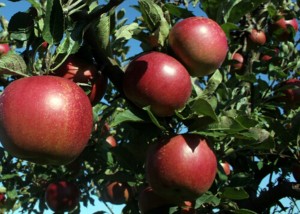 Every year, thousands of pounds of fruit fall to the ground and rot. Homeowners who grow apples, plums, cherries, pears or other fruit often find that they can’t keep up with their fruit harvest, and they can only give away so much of their bounty to neighbors and co-workers.
Every year, thousands of pounds of fruit fall to the ground and rot. Homeowners who grow apples, plums, cherries, pears or other fruit often find that they can’t keep up with their fruit harvest, and they can only give away so much of their bounty to neighbors and co-workers.
The Seattle Times has a good story in today’s newspaper about a volunteer group called City Fruit that helps homeowners deal with the overabundance of fruit growing on their trees. City Fruit offers an added twist — helping homeowners better care for their fruit trees, including how to deal with worms, proper pruning and other tree tips. The Times writes:
City Fruit goes beyond harvesting by offering homeowners instruction in pruning, pest control and harvesting as well as workshops in canning or jam making. The organization also hopes to create a neighborhood network so that anyone seeking harvesting help or workshop information can consult its Web site for citywide options…
There are plenty of groups in Seattle that help homeowners harvest fruit and deliver them to food banks, so there’s no excuse for letting those juicy apples or pears fall to the ground and rot. Solid Ground, a nonprofit in Fremont, for example, runs the Community Fruit Tree Harvest. The group posts a list of food banks and other programs that will accept fruit in 2009 (PDF). You can sign up as a volunteer to scout neighborhood fruit trees that can potentially be harvested, provide storage for fruit or picking buckets or be “on call” to harvest fruit in your neighborhood. You can also organize your own harvest party and donate your fruit by calling Seattle Tilth’s Garden hotline at 206-633-0224 or email help@gardenhotline.org).
Filed under Seattle Landscape Design, Seattle Landscape Maintenance, Vegetable Gardening Permalink · No Comments »
The June pest of the month is the earwig. This is their peak time of the year. 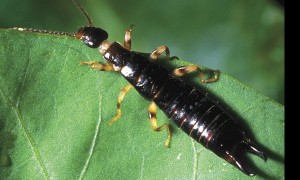 They’re ugly little suckers, and distinctive in their look: dark brown long body with light brown legs and forceps at the rear. (Those pincers are harmless to humans). They’re nocturnal pests, so they come out at night. During the day, they tend to hide in moist, cool shady spots, including under leaves, garden pots, wood or compost piles, mulch. Some feed on aphids, insect eggs and mites, which is beneficial, but they also tend to snack on seedling plants, fruit crops such as strawberries, and flowers such as dahlias, zinnias and marigolds. You’ll find tiny irregular holes in the leaves, or you’ll notice that the leaves have been chewed around the edges.
They’re ugly little suckers, and distinctive in their look: dark brown long body with light brown legs and forceps at the rear. (Those pincers are harmless to humans). They’re nocturnal pests, so they come out at night. During the day, they tend to hide in moist, cool shady spots, including under leaves, garden pots, wood or compost piles, mulch. Some feed on aphids, insect eggs and mites, which is beneficial, but they also tend to snack on seedling plants, fruit crops such as strawberries, and flowers such as dahlias, zinnias and marigolds. You’ll find tiny irregular holes in the leaves, or you’ll notice that the leaves have been chewed around the edges.
How do I get rid of them? Trap them. Set out several homemade traps in your yard. One suggestions is to fill an empty tuna can (or other shallow can) with about 1/2 inch of vegetable oil. When the earwigs fall into the oil, empty the cans, refill with oil and set it out again. Another option is to use a moistened rolled-up newspaper or short piece of rubber hose. Put them out before dark and when you get catch some earwigs, shake them out into a pail of soapy water.
Try to eliminate areas where earwigs like to hang out. That means making sure you don’t have piles of yard debris, leaves, wood or other hiding places, especially near your vegetable beds.
Filed under Seattle Landscape Design, Seattle Landscape Maintenance, Vegetable Gardening Permalink · No Comments »
Growing herbs indoors or outdoors is one of the most economical benefits of having a garden. Some herbs are no-brainers, like rosemary, Italian parsley, oregano and mint, because they require very little attention and buying sprigs of those herbs can be expensive. Other herbs such as basil and cilantro are a bit more finicky, but not impossible.
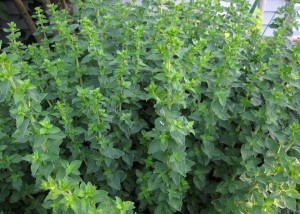
oregano
Most herbs require some amount of pinching/pruning to keep them full and happy. Make it a regular part of your harvest and it won’t seem like work at all. I regularly cut back rosemary, mint, parsley and basil as I need it, but sometimes even when I don’t. I want to keep the plants full and bushy.
Rosemary, thyme, sage, oregano and savory can tolerate dry conditions. They’re also great low-maintenance plants for your landscape because they require little water. Basil, lemon balm, dill need a bit more moisture. Mint likes wet soil, and should be planted in containers to prevent them from taking over your garden.
Here are some other tips to growing herbs:
Basil: Likes sun! Pinch out stems to create side shoots, and encourage full, bushy growth. Keep the plants well picked. When flowering starts, pinch off each flowering shoot and the leaf pair directly below. This Oregonian article has a good illustration of where to cut.
Cilantro: Perfect herb for Northwest climates because it doesn’t like hot weather. Cilantro prefers cool but sunny conditions. Too hot and it bolts (flowers). The flowers produce coriander seeds, which are also used in cooking. I seeded some a few weeks after I planted my peas earlier this spring, and have periodically re-seeded it with good success. Great for that guacamole!
Parsley: This herb is easy to grow from seed, but are readily available as starts.
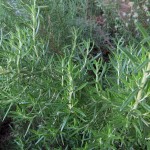
rosemary
Regularly prune parsley and don’t allow them to go to seed. Trim large stems every so often.
Rosemary: A must have in the northwest. Regularly prune rosemary, cutting off about a quarter or so, to prevent the plant from growing woody. Rosemary loves full sun, and can tolerate dry conditions nicely. In my opinion, you can’t prune rosemary too hard.
Filed under Seattle Landscape Design, Seattle Landscape Maintenance, Vegetable Gardening Permalink · 1 Comment »
One of our neighbors recently got slapped on the wrist from the city of Seattle for putting in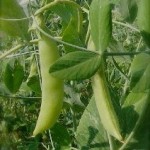 some raised vegetables beds in her parking strip without first paying for a $225 permit. She had gotten rid of grass that filled her planting strip — that no-man’s land between the street and the sidewalk — and was getting ready to put in raised beds, when she had to take it down.
some raised vegetables beds in her parking strip without first paying for a $225 permit. She had gotten rid of grass that filled her planting strip — that no-man’s land between the street and the sidewalk — and was getting ready to put in raised beds, when she had to take it down.
Well, there’s good news today for well-intentioned urban farmers who want to make use of their planting strips to grow edibles. Seattle Mayor Greg Nickels announced that homeowners who want to make use of the strip won’t have to pay the $225 permit fee that had previously been required for pavers, hardscapes or planting boxes. You still need to get a permit, but those are free and can be obtained online from the Seattle Department of Transportation.
“This change makes it easier to plant flowers and vegetables in the strip between the sidewalk and the street. For many gardeners, that’s prime space,” said Nickels. “It’s one of the things that makes Seattle special, and, with planting season upon us, it’s time to get those green thumbs going.”
Check out the SDOT web site for more information, including tips on how to make improvements to your parking strip. Read more from Jennifer Langston, a former P-I reporter, who wrote about urban farming in Seattle.
Filed under Vegetable Gardening Permalink · 1 Comment »
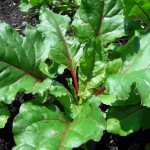 Lots of people are starting to grow their own groceries. They’re converting portions of their yards to make room for vegetables, herbs and fruits. If you’re new to urban gardening, you may want to check out the West Seattle Edible Garden Fair on Saturday, May 23. The event is 9:30 a.m. to 4 p.m. at the South Seattle Community College horticulture buildings, 6000 16th Avenue SW, and offers hands-on workshops to help you get started.
Lots of people are starting to grow their own groceries. They’re converting portions of their yards to make room for vegetables, herbs and fruits. If you’re new to urban gardening, you may want to check out the West Seattle Edible Garden Fair on Saturday, May 23. The event is 9:30 a.m. to 4 p.m. at the South Seattle Community College horticulture buildings, 6000 16th Avenue SW, and offers hands-on workshops to help you get started.
The workshops include how to build healthy soils, garden in small spaces or containers, integrating edibles into your landscape and how to grow warm season crops (like tomatoes and peppers) successfully in our cooler Northwest climate. Here’s the schedule of events.
The event is co-sponsored by the Community Harvest of Southwest Seattle, a very cool group that works to ensure that everyone has fresh fruits and vegetables to eat. The program picks up donations of produce from your fruit trees and vegetable gardens and distributes them to those who need it.
We love the idea of their fruit harvest program. If you have a plum, apple or other tree that bears more fruits than you can possibly handle, consider donating the extras. The Community Harvest of Southwest Seattle can connect you with volunteers to harvest the fruit and donate them to local food banks. They’re trying to harvest about 6500 pounds of fruit for 2009. Fill out this online form if you’re interested in donating this year.
Filed under Vegetable Gardening Permalink · 1 Comment »
Want to know what’s killing your dogwood or how to properly prune your roses? Looking for a less toxic way to get rid of slugs, aphids and other pests? Got a tree or shrub that you need help identifying?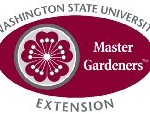
Starting this month and through early September, you’ll find gardening experts who can help answer your questions at dozen of Master Gardener clinics throughout King County. Master Gardeners are volunteers who go through a rigorous training program by Washington State University. They provide research-based information on home gardening and pest control.
In West Seattle this summer, Andy will periodically be staffing the Master Gardener booth at the West Seattle Farmers Market, and I can be found at McLendon Hardware in White Center. Here are the hours & location:
West Seattle Farmers Market, 44th Avenue SW and Alaska Street, April 27-September 14, Sundays, 10 a-.m.-2 p.m. (No clinic May 4).
McLendon Hardware, 10210 16th Avenue SW, April 5-September 13, Saturdays, 10 a.m.-2 p.m.
But don’t limit yourself to West Seattle. There are clinics in Ballard, Rainier Valley, Renton, North Seattle, Vashon Island, Lake City, Federal Way, Burien and more. Find the full list of locations and times here.
King County has one of the largest Master Gardener programs in the world. It started here, before spreading to all 50 states and many other countries. To find out more about becoming a master gardener, click here.
Filed under Seattle Landscape Maintenance, Seattle Lawn Care, Vegetable Gardening Permalink · No Comments »